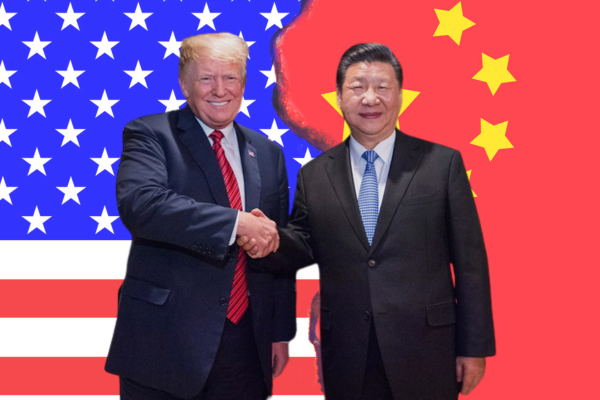.png)

Dr. Srinath Sridharan is a Corporate Advisor & Independent Director on Corporate Boards. He is the author of ‘Family and Dhanda’.
November 5, 2025 at 6:52 AM IST
The market’s reflex is to protect margins. The regulator’s duty is to protect investors. The Securities and Exchange Board of India's draft revamp of rules for mutual funds does exactly that, and it deserves support.
SEBI's consultation paper proposes a cleaner, tighter definition of what investors pay, with statutory levies like GST, STT, CTT and stamp duty kept outside the expense-cap and disclosed separately. It also strips out the transitory 5-basis-point add-on and sharply lowers caps on brokerage that can be charged to schemes to 2 bps for cash and 1 bps for derivatives.
This is the right sequencing. First, make every rupee of cost visible. Second, constrain the charges that are not core to investment skill. Third, align disclosure so “Total Expense Ratio” means what investors think it means. The direction is unambiguous. Costs fall. Transparency rises. Accountability improves. Build consumer trust.
SEBI is also recasting slab-wise TER limits and clarifying that performance-linked fees can be enabled under a separate framework with safeguards. That keeps space for skill to be rewarded while blocking back-door loading of costs. For retail investors who increasingly use mutual funds as default savings pipes, this combination of lower frictions and better labelling is overdue. India’s mutual-fund industry now manages roughly ₹75.6 trillion. When an industry is this central to household wealth, the regulator must insist that price and value line up.
Importantly, the proposed cap on brokerage outside the TER represents perhaps the most consequential single measure. Equity trades limited to 0.02% and derivative trades to 0.01% outside TER means all excess brokerage has to be absorbed within the TER. That forces AMCs and brokers to align incentives and stop hidden cost shifting. Many industry estimates suggest schemes may see TERs drop by 15-20 bps under the new regime — a meaningful benefit for unitholders. Moreover, by segregating execution costs and statutory levies from the TER, the visible denominator shrinks, making comparisons more straightforward for investors.
The Push-back
We will hear three broad lines of argument.
First, that lower caps undermine market quality because execution services fund research that benefits all unitholders.
Second, that smaller AMCs with thinner AUM cannot absorb margin pressure without harming product breadth.
Third, that distributors will step back from reaching the last mile if commissions are squeezed, slowing financial inclusion.
These are familiar claims in every fee-reform cycle. They should be scrutinised, not dismissed, and then answered with facts.
The Counterarguments
On research cross-subsidies: SEBI’s point is not that research lacks value. It is that research should not be charged twice, once inside the management fee and again, indirectly, via fat brokerage bundled with execution. If an AMC believes external research adds alpha, it can pay for it from its management fee and justify that fee in performance net of costs. Bundling erodes incentives to invest in in-house capability and blurs accountability when performance lags. A low, uniform cap on brokerage cleans up that incentive mess. Investors deserve to know they are paying for skill, not soft-dollar arrangements.
On small-AMC viability: Slabbed TERs and the proposed tweaks already recognise scale economics. Moreover, many of the largest frictions sit outside true portfolio management. As digital operations and passives scale, cost-to-serve falls even for mid-size firms. Competition should push AMCs to redesign cost stacks rather than externalise every inefficiency to unitholders. Where business models rely on hidden tolls, the answer is transformation, not regulatory retreat. The consultation paper also removes duplicative disclosures and legacy compliance clutter, which offsets cost in ways P&L models often ignore.
On distribution reach: Commission compression has accompanied every modernisation of fund economics globally. The usual outcome is not investor abandonment but channel shift and product simplification. Lower, clearer all-in costs tend to drive category growth by increasing investor trust. If some high-cost channels retrench, lower-cost direct and advisory channels expand. SEBI’s clarity on what counts as TER, plus hard caps on non-core charges, will help cleanly compare direct and regular plans and push AMCs to compete on outcomes, not inducements. That is healthy for inclusion over time.
The Payoff
This overhaul is not a narrow fight over a few basis-points. It is about market architecture. By separating statutory levies from TER, cutting brokerage caps, and mandating granular disclosure of all heads of cost, SEBI is telling investors exactly what they buy. It is also signalling to AMCs that value creation must show up net of friction.
Over the next cycle, that should accelerate three shifts. First, a durable re-rating of investor trust, which is the foundation of systematic investing. Second, better alignment between manager incentives and long-term performance, including through a potential performance-linked fee framework done right. Third, a more resilient ecosystem in which conflicts from side-businesses are handled through real separation and oversight rather than rhetoric. That is why trustees and boards feature prominently in the draft. Governance is not an afterthought.
It is natural for the industry to make the right noises in public while lobbying hard behind closed doors to preserve its privileges. Every reform that tilts the balance towards the investor meets the same choreography — polite acceptance in principle, coupled with persistent pressure to water down the detail. The truth is that few in the financial ecosystem worry about consumer rights until neglect turns into a collective grievance. SEBI’s clarity on costs may look technical, but it goes to the core of fairness in a market where complexity too often masquerades as expertise.
Yet SEBI, too, has lessons to learn. Its many committees, often populated by industry veterans, can begin to resemble trade associations more than independent forums of thought. That weakens both perception and substance. A truly balanced consultative process must include non-industry voices — consumer representatives, academics, fiduciaries, and independent economists who speak for savers, not sellers. If SEBI can do that and still hold firm on this proposal, it will move from being a procedural regulator to a principled one. Investors will know that this consultation is not another paper exercise, but a genuine step towards making capital markets work for those who fund them.
SEBI has invited public comments until mid-November. The industry will lobby hard for Dilute and Delay. The regulator should listen, clarify genuine ambiguities, and then stand firm. Investors deserve a regime where every rupee charged is necessary, disclosed, and earned. The consultation paper meets that test. The right answer now is to land it without back-sliding.




